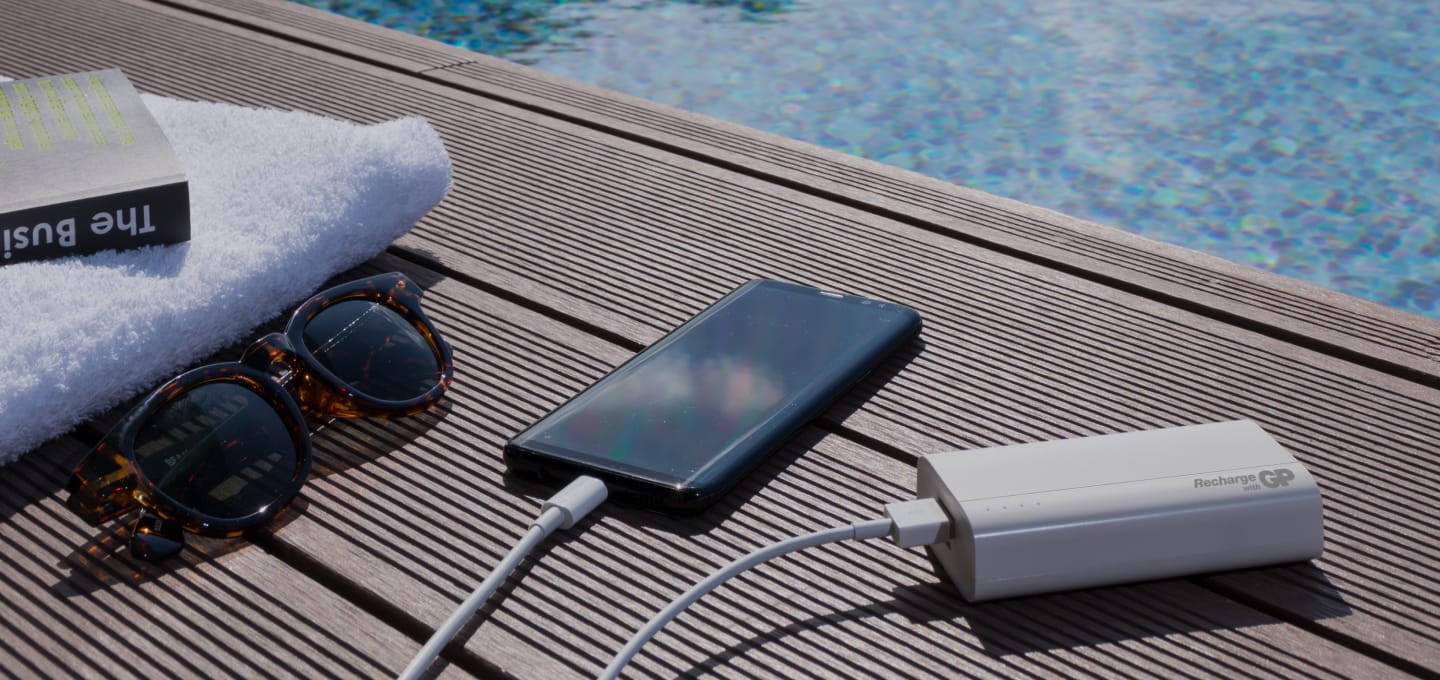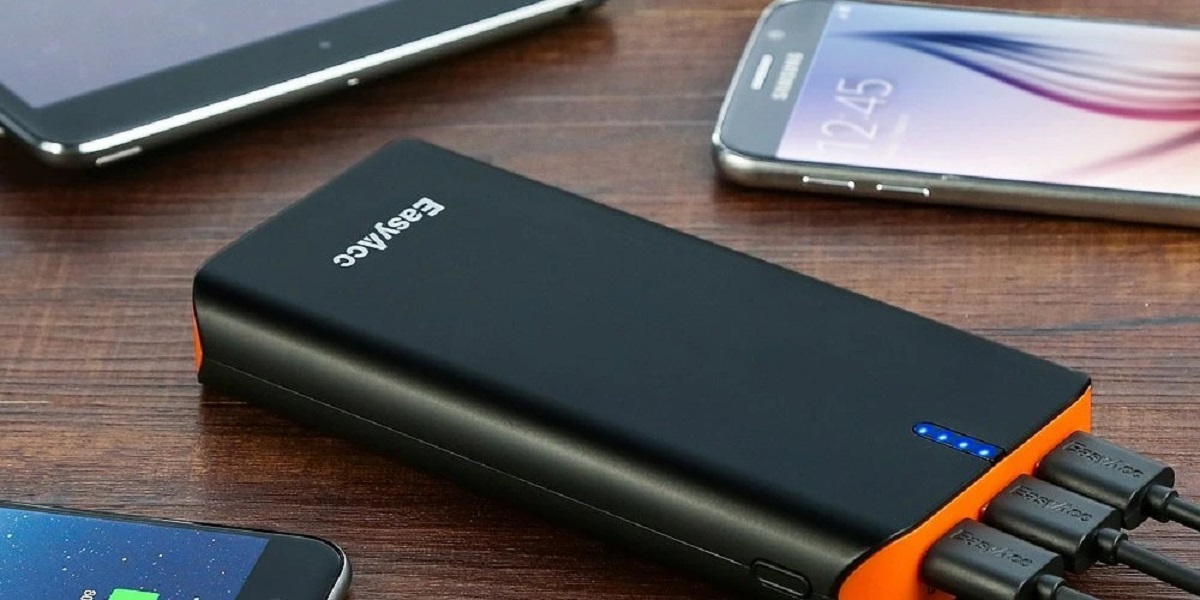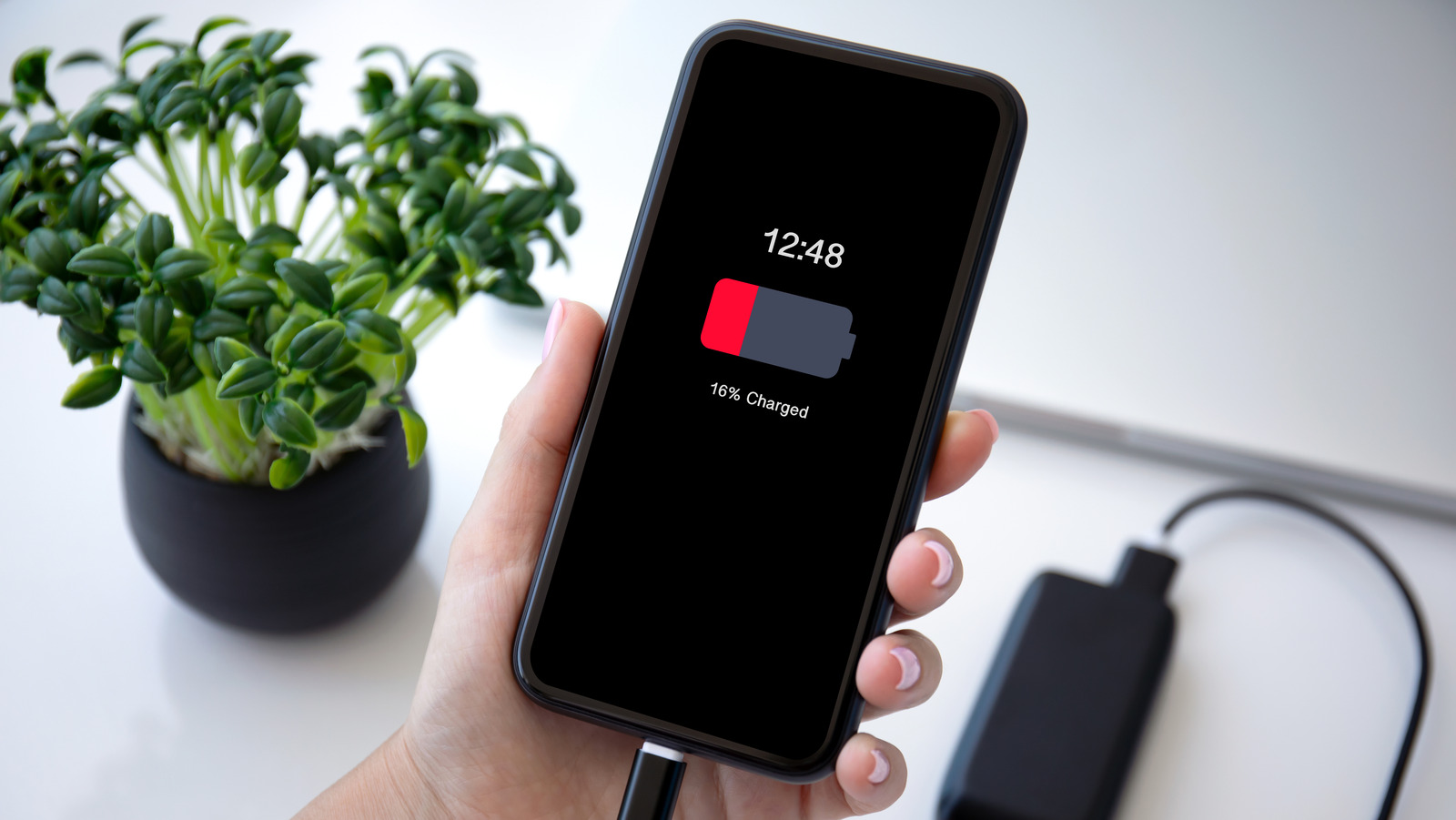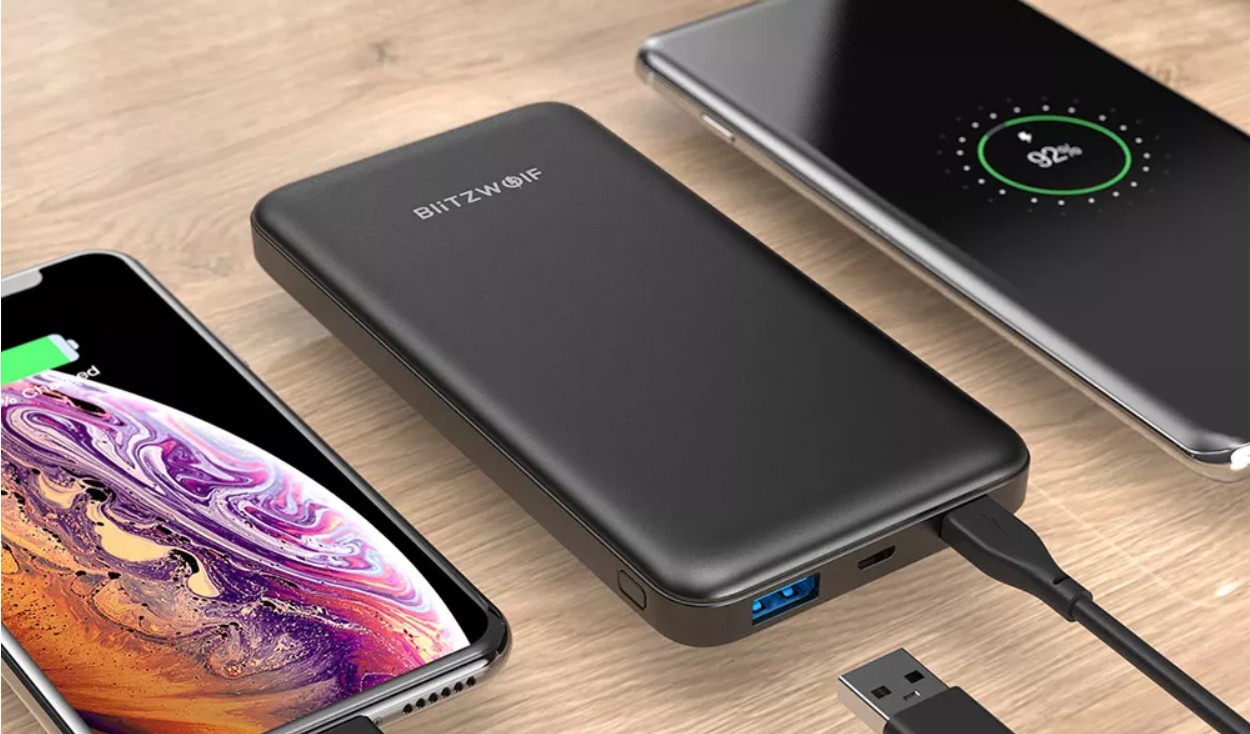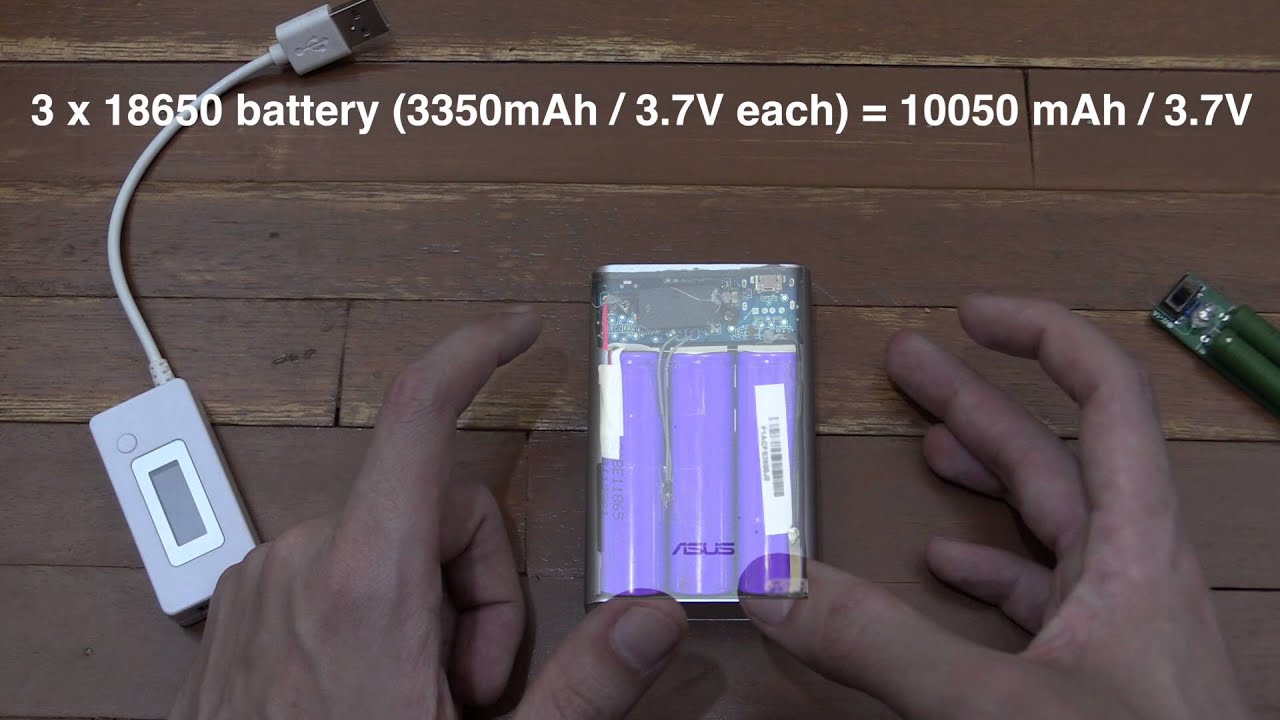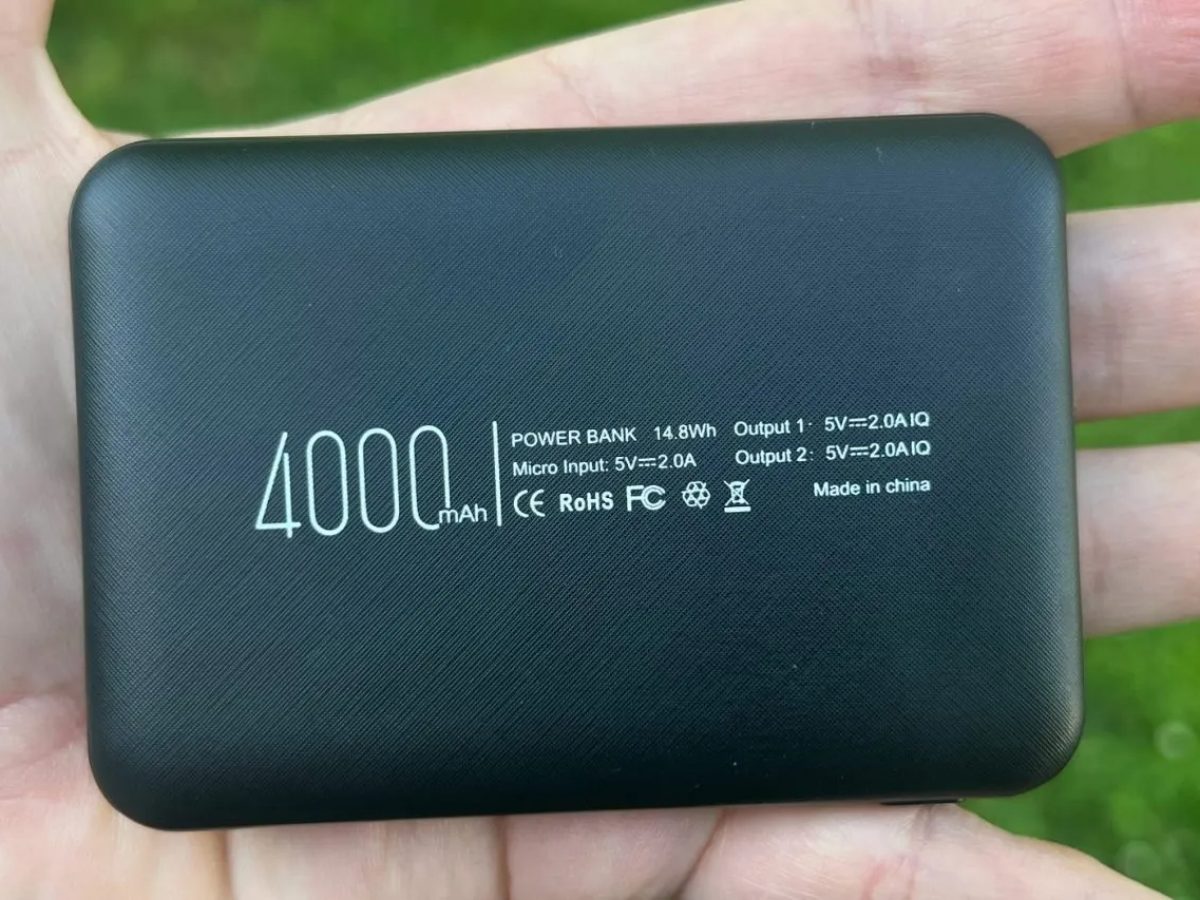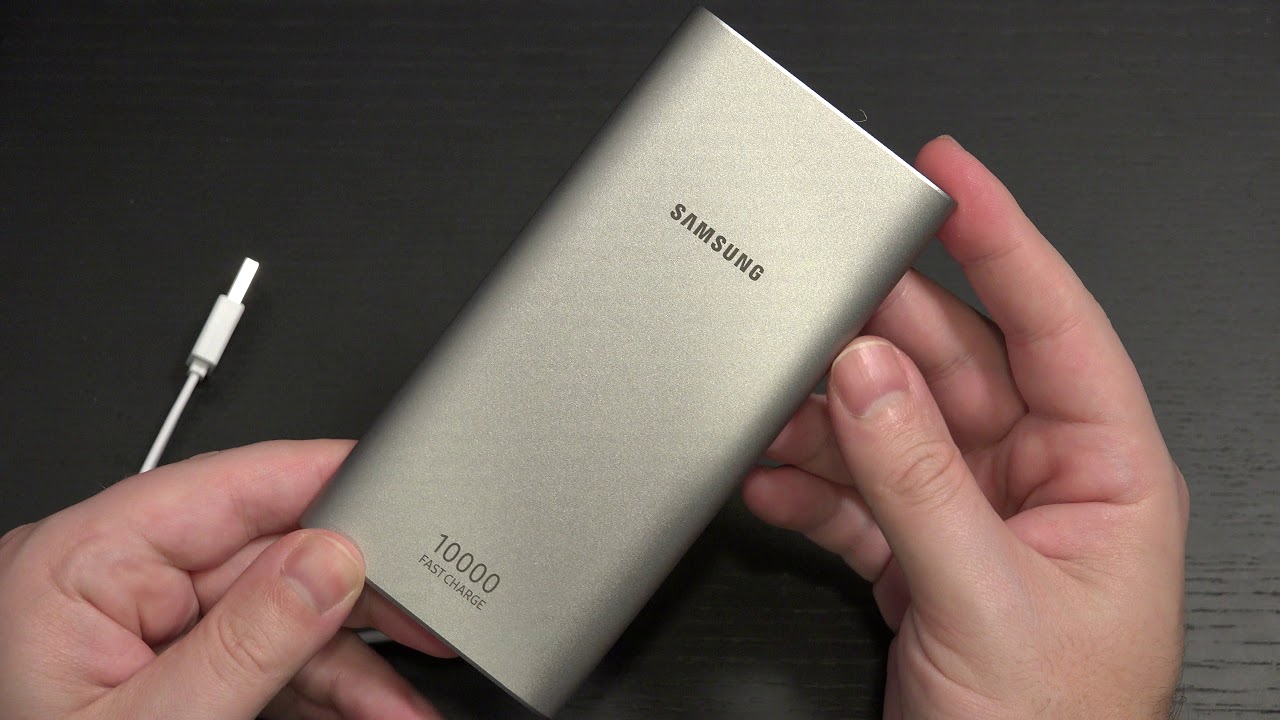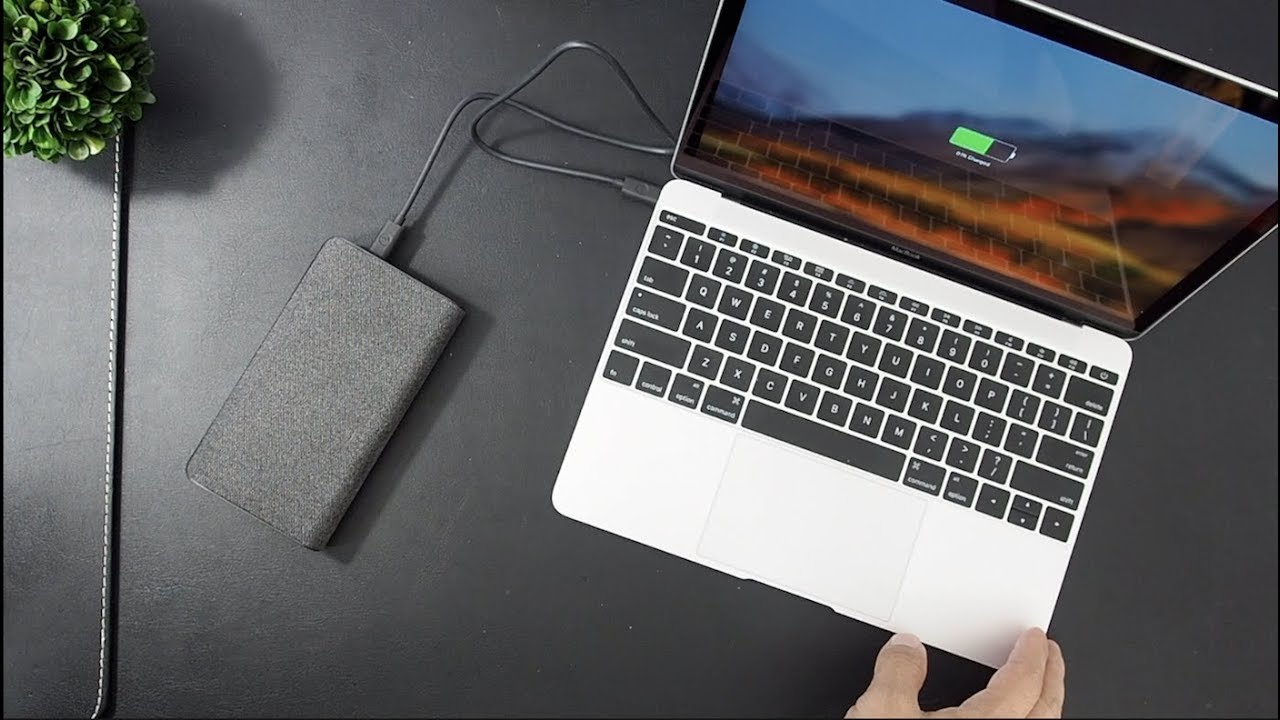Introduction
In today’s fast-paced and tech-savvy world, staying connected and powered up is crucial. Whether you’re on a long flight, exploring the great outdoors, or simply navigating through a busy day, you rely on your electronic devices for communication, entertainment, and productivity. However, the battery life of these devices can often fall short, leaving you in a bind when you need them the most. This is where a power bank comes to the rescue.
A power bank, also known as a portable charger, is a compact and rechargeable device that provides a source of power for your smartphones, tablets, and other USB-enabled devices on the go. With a power bank in your bag or pocket, you can bid farewell to the frustration of running out of battery halfway through the day.
By simply connecting your device to a power bank through a USB cable, you can recharge it and extend its battery life, regardless of whether you have access to an electrical outlet. With the convenience and versatility it offers, a power bank has become an essential accessory for anyone who heavily relies on their devices throughout the day.
But how does a power bank work? What factors should you consider before purchasing one? And how can you optimize its usage and efficiency? In this article, we will explore these questions and provide you with all the information you need to know about power banks.
What is a Power Bank?
A power bank is a portable and rechargeable device that stores electrical energy and is designed to charge your electronic devices when you’re on the move. Essentially, it acts as an external battery pack that you can carry with you wherever you go. The primary function of a power bank is to provide a convenient and reliable power source for charging smartphones, tablets, laptops, cameras, and other USB-enabled devices.
Power banks come in various shapes and sizes, but they generally consist of a built-in battery, charging circuitry, and multiple output ports. The built-in battery stores electrical energy and can be recharged using a standard wall charger or a USB cable connected to a computer or other power source. The charging circuitry controls the flow of energy between the power bank and the connected device, ensuring safe and efficient charging.
Power banks are equipped with one or more USB ports, allowing you to connect your devices using their respective charging cables. Some power banks are also equipped with other types of ports, such as USB-C, micro USB, or Lightning, to accommodate different devices.
The capacity of a power bank is measured in milliampere-hours (mAh) and indicates the amount of energy it can store. The higher the mAh rating, the more times you can recharge your devices. For example, a power bank with a capacity of 10,000mAh can fully charge a smartphone with a 3,000mAh battery approximately three times before needing to be recharged itself.
Power banks have become increasingly popular due to their convenience and versatility. They are particularly useful in situations where access to a power outlet is limited or unavailable, such as during outdoor activities, travel, or emergencies.
While power banks are primarily used for recharging electronic devices, some models also come with additional features such as built-in flashlights, LCD displays to indicate battery status, and even wireless charging capabilities. These features provide added functionality and make power banks an even more practical and valuable accessory.
How Does a Power Bank Work?
Understanding how a power bank works is essential in maximizing its usage and ensuring efficient charging of your electronic devices. At its core, a power bank functions as a portable energy storage device that transfers power from its internal battery to your devices via a USB connection.
The charging process of a power bank involves several key components:
- Battery: The power bank contains a built-in rechargeable battery, typically made of lithium-ion or lithium-polymer. These batteries are lightweight, compact, and have a high energy density, making them ideal for portable devices like power banks.
- Input Port: The input port on a power bank is used to recharge its internal battery. It is typically a micro USB or USB-C port, and you can connect it to a power source like a wall charger or a computer using the corresponding cable. The power bank’s battery will start charging once it is connected to a power source.
- Control Circuit: The control circuit in the power bank plays a crucial role in managing the charging and discharging process. It regulates the flow of power between the power bank and the connected device, ensuring safe and efficient charging without overcharging or damaging the battery.
- Output Ports: Power banks are equipped with one or more USB output ports, allowing you to connect your devices using their charging cables. These ports deliver the stored electrical energy from the power bank’s battery to the connected device, charging it as if it were connected to a wall charger.
- Charging Indicator: Many power banks feature LED indicator lights that display the remaining battery capacity or the charging status. This allows you to easily determine the power bank’s charge level and decide when to recharge it.
When you connect your electronic device to a power bank via the USB output port, the control circuit detects the connection and starts transferring power from the power bank’s battery to your device. The power bank continues to supply power until your device is fully charged or until the power bank’s battery is depleted.
It’s important to note that the charging speed of a power bank may vary depending on the capacity of the power bank, the output current rating, and the device being charged. Some power banks are equipped with fast-charging technologies, such as Quick Charge or Power Delivery, which can provide higher charging speeds for compatible devices.
Overall, a power bank works by storing electrical energy in its internal battery and utilizing a control circuit to manage the transfer of power between the power bank and your devices. Understanding how it functions will help you make the most of your power bank and keep your devices charged whenever and wherever you need them.
Types of Power Banks
Power banks come in different types, each catering to specific needs and preferences. Understanding the various types can help you choose the most suitable power bank for your devices and charging requirements. Here are some common types of power banks:
- Standard Power Banks: These are the most common types of power banks and are widely available. They typically have a single USB output port and come in various capacities ranging from 2,000mAh to 20,000mAh or more. Standard power banks are suitable for charging smartphones, tablets, and other small devices.
- Solar Power Banks: Solar power banks are designed with built-in solar panels that can convert sunlight into electrical energy, providing an eco-friendly and renewable charging option. While solar charging may take longer than traditional methods, it offers convenience in outdoor settings where access to electricity may be limited. Solar power banks are ideal for camping, hiking, and other outdoor activities.
- Wireless Power Banks: Wireless power banks are equipped with Qi wireless charging technology, allowing you to charge compatible devices simply by placing them on the power bank’s surface. Without the hassle of cables, wireless power banks offer convenience and versatility. However, it’s important to ensure that your device supports wireless charging before opting for this type of power bank.
- Rugged Power Banks: Rugged power banks are built to withstand harsh conditions and are designed to be shockproof, dustproof, and waterproof. They are perfect for outdoor enthusiasts, travelers, or individuals working in extreme environments. Rugged power banks often come with additional features such as built-in torchlights or carabiner clips for easy attachment to backpacks.
- Laptop Power Banks: Laptop power banks are specifically designed to charge laptops and notebooks. They feature higher power outputs and larger capacities to accommodate the energy-demanding nature of laptops. Laptop power banks are equipped with a variety of adapters to fit different laptop models. These power banks often have multiple output ports to charge additional devices simultaneously.
It’s important to consider your specific charging needs and preferences when selecting a power bank. Factors such as capacity, size, weight, number of output ports, and additional features vary among different types of power banks. Assessing your requirements and understanding the capabilities of each type will help you make an informed decision and ensure that your power bank meets your charging needs.
Factors to Consider Before Buying a Power Bank
When it comes to purchasing a power bank, there are several important factors to consider to ensure that you choose the right one for your needs. Here are some key factors to keep in mind:
- Capacity: The capacity of a power bank determines how much charge it can store. Consider the battery capacity of your devices and how many times you want to recharge them before the power bank needs to be recharged. Higher capacity power banks provide more charges but tend to be bulkier and heavier.
- Output Power: The output power of a power bank determines how quickly it can charge your devices. Look for power banks with higher output currents, typically measured in Amps (A). Faster charging speed is particularly important for devices with larger batteries or those that support fast charging technologies like Quick Charge or Power Delivery.
- Input Power: Consider the input power of the power bank, which determines how quickly it can recharge. Power banks with higher input currents will recharge faster, reducing downtime and ensuring that you can use your power bank more quickly when it’s needed.
- Number of Output Ports: Determine how many devices you need to charge simultaneously. Power banks with multiple output ports allow you to charge multiple devices at once, which can be convenient if you have multiple devices or if you want to share your power bank with others.
- Port Compatibility: Check if the power bank’s output ports are compatible with the devices you intend to charge. Most power banks come with USB ports, but some may also have USB-C, micro USB, or Lightning ports. Ensure that your devices’ charging cables are compatible with the power bank’s output ports.
- Size and Weight: Consider the portability of the power bank. If you’re planning to carry it in your bag or pocket, opt for a compact and lightweight model. However, keep in mind that smaller power banks often have lower capacities and may offer fewer charging cycles.
- Build Quality: Look for power banks made with high-quality materials that are durable and resistant to scratches and impact. If you’re planning to use the power bank in outdoor or rugged environments, consider a rugged or shockproof model that can withstand harsh conditions.
- Additional Features: Some power banks come with extra features like built-in flashlights, LCD displays to indicate battery status, or wireless charging capabilities. Assess these features based on your needs and preferences, but remember that additional features may increase the cost and weight of the power bank.
- Brand Reputation and Reviews: Research different brands and read customer reviews to gauge the reliability and performance of the power bank. Opt for reputable brands that offer warranties and have positive feedback from users.
By considering these factors, you can choose a power bank that aligns with your specific charging needs, ensuring that you have a reliable and efficient charging solution for your electronic devices while on the go.
How to Choose the Right Power Bank for Your Needs
With various options available in the market, selecting the right power bank can seem daunting. However, by considering a few key factors, you can easily narrow down your choices and find the perfect power bank for your needs. Here’s a step-by-step guide on how to choose the right power bank:
- Determine Your Charging Needs: Evaluate your charging requirements. Consider the types of devices you need to charge, their battery capacities, and how frequently you will be using the power bank. This will help you determine the ideal capacity and output power of the power bank.
- Check Compatibility: Ensure that the power bank you’re considering is compatible with your devices. Check if it supports the charging cables or connectors you need, such as USB-C, micro USB, or Lightning.
- Consider the Capacity: Choose a power bank with a capacity that aligns with your charging needs. Higher capacity power banks provide more charges but may be bulkier and heavier. Strike a balance between capacity and portability.
- Assess Charging Speed: Look for power banks with higher output currents to ensure faster charging times. Consider devices that support fast charging technologies like Quick Charge or Power Delivery if you want to take advantage of these features.
- Evaluate Portability: Depending on your usage, consider the size and weight of the power bank. If you need a power bank for travel or outdoor activities, opt for a compact and lightweight model that fits easily in your bag or pocket.
- Check Additional Features: Assess any additional features that might be beneficial to you, such as built-in flashlights, LCD displays, or wireless charging capabilities. Prioritize the features that are most important to your charging needs.
- Research Brands and Reviews: Look for reputable brands with a track record of quality and customer satisfaction. Read reviews and seek recommendations to ensure that the power bank you choose is reliable and performs well.
- Consider Budget: Determine your budget and find a power bank that falls within your price range. Remember that higher capacity or specialized power banks may come at a higher cost, so set realistic expectations based on your budget.
- Compare and Decide: Finally, compare the power banks that meet your requirements and make a decision based on your research and evaluation. Consider factors like price, warranty, and customer support in your decision-making process.
By following these steps, you can confidently choose a power bank that suits your specific charging needs and ensures that your devices stay powered up wherever you go. A reliable and efficient power bank will provide peace of mind and convenience, enabling you to stay connected and powered on the move.
Tips for Using a Power Bank Efficiently
To make the most out of your power bank and ensure efficient charging of your devices, consider the following tips:
- Fully Charge the Power Bank: Before heading out, make sure to fully charge your power bank. This ensures that you have ample power to charge your devices when needed.
- Use the Right Cable: Use the charging cable that came with your device or purchase high-quality cables compatible with your devices. Using substandard or incompatible cables can lead to slower charging speeds or even damage to your devices or the power bank.
- Disconnect Unused Devices: When charging multiple devices, disconnect those that have reached full charge. This allows the power bank to focus on charging the remaining devices, optimizing its power output and speeding up the charging process.
- Keep the Power Bank Cool: Excessive heat can reduce the efficiency and life span of your power bank. Avoid exposing it to direct sunlight or high temperatures. If possible, charge your devices in a cool environment to prevent overheating.
- Avoid Frequent Low Battery Levels: Try to avoid draining your devices’ batteries completely before recharging them. Routinely charging your devices when they reach around 20-30% can help maintain their battery health and maximize the effectiveness of your power bank.
- Use Power-Saving Modes: Some devices offer power-saving modes that limit background activities and reduce power consumption. Enable these modes to prolong your device’s battery life and decrease the charging time when using a power bank.
- Optimize Charging Order: If charging multiple devices, prioritize the ones with lower battery levels. By charging devices with lower battery percentages first, you can ensure that every device gets sufficient charging time and maximize the overall charging efficiency.
- Store the Power Bank Properly: When not in use, store your power bank in a cool and dry place. Avoid storing it with other metallic objects that could potentially damage it. Regularly checking its charge level and recharging it if necessary also helps maintain its overall battery health.
- Replace Old or Faulty Power Banks: Over time, power banks may experience a decrease in capacity or efficiency. If you notice a significant reduction in its charging performance or if it becomes unreliable, it may be time to replace your power bank to ensure optimal charging efficiency.
By following these tips, you can ensure that your power bank operates efficiently and effectively when charging your devices. Remember to handle and use your power bank with care to extend its lifespan and enjoy a reliable power source for all your portable charging needs.
Common Power Bank Features and Specifications
Power banks come with a variety of features and specifications that enhance their functionality and usability. Understanding these common features can help you make an informed decision when choosing a power bank. Here are some key features and specifications to look for:
- Capacity: Capacity refers to the amount of electrical energy a power bank can store, measured in milliampere-hours (mAh). Higher capacity power banks can provide more charges for your devices before needing to be recharged themselves.
- Output Ports: Power banks generally have one or more USB output ports. These ports allow you to connect your devices using their respective charging cables. Some power banks may also include other types of ports, such as USB-C, micro USB, or Lightning, to accommodate different devices.
- Output Power: Output power, measured in amps (A), determines how quickly the power bank can charge your devices. Higher output power allows for faster charging, especially for devices with larger batteries or those that support quick charging technologies.
- Input Port: The input port on a power bank is used to recharge its internal battery. Most power banks feature micro USB or USB-C input ports that you can connect to a power source like a wall charger or a computer using the appropriate cable.
- Fast Charging Support: Some power banks are equipped with fast charging technologies like Quick Charge or Power Delivery. These technologies enable compatible devices to charge at a higher rate, reducing charging times significantly.
- Pass-Through Charging: Pass-through charging allows you to charge both the power bank and connected devices simultaneously. This feature is useful when you have limited power outlets or when you want to charge multiple devices with a single power source.
- Battery Indicator: Many power banks feature LED lights or LCD displays that indicate the remaining battery level. This allows you to easily check the power bank’s charge status and plan your charging needs accordingly.
- Compact Design: Power banks come in various sizes and weights. Consider a compact and lightweight design if portability is important to you. However, keep in mind that smaller power banks tend to have lower capacities.
- Additional Features: Some power banks offer extra features to enhance their functionality, such as built-in flashlights, wireless charging capabilities, or rugged designs for durability in outdoor environments. Evaluate these additional features based on your specific needs and preferences.
- Brand Reputation and Quality: Research different power bank brands and read customer reviews to ensure reliability and performance. Opt for reputable brands known for their high-quality power banks and customer satisfaction.
By considering these features and specifications, you can choose a power bank that aligns with your charging needs and preferences. Prioritize the features that are most important to you and select a power bank that offers the right balance of capacity, compatibility, and functionality.
Pros and Cons of Using a Power Bank
Power banks offer a convenient solution for charging your devices on the go, but like any technology, they come with their own set of advantages and disadvantages. Understanding the pros and cons of using a power bank can help you make an informed decision on whether it’s the right choice for your charging needs:
Pros:
- Portability: Power banks are portable and compact, making them easy to carry in your bag or pocket. They provide a reliable power source wherever you go, eliminating the need to search for wall outlets or be tethered to a power socket.
- Convenience: With a power bank, you can charge your electronic devices anytime and anywhere, regardless of whether you have access to an electrical outlet. This is particularly useful during travel, outdoor activities, or in emergency situations.
- Extended Battery Life: Power banks offer extra battery life, allowing you to significantly extend the usage time of your devices. This is especially beneficial during long commutes, festivals, or times when you won’t have access to a power source for an extended period.
- Device Compatibility: Power banks are versatile and compatible with a wide range of devices, including smartphones, tablets, laptops, cameras, and more. They support multiple charging cables and can charge different devices simultaneously through their multiple output ports.
- Backup Power: Power banks provide a reliable backup power source during power outages or when traveling to areas with unreliable electricity supply. This ensures that you can stay connected, charge important devices, and communicate with others even in challenging situations.
- Eco-Friendly Charging: Some power banks are equipped with solar panels, allowing you to harness the sun’s energy and charge your devices using renewable power. This eco-friendly charging option reduces reliance on traditional electricity sources and helps minimize your environmental impact.
Cons:
- Charging Time: Power banks take time to recharge, depending on their capacity and the charger used. Higher capacity power banks require longer charging times, which can be inconvenient if you need immediate access to a fully charged power bank.
- Extra Weight and Bulk: Carrying a power bank adds extra weight and bulk to your bag or pocket. While newer models are designed to be lightweight and portable, it’s important to consider the size and weight if you’re looking for a power bank for everyday use.
- Deteriorating Performance: Over time, the performance of a power bank can degrade. The battery capacity may decrease, resulting in fewer charging cycles, and the charging speed may become slower. Regular maintenance and replacement may be required to ensure optimal performance.
- Compatibility Issues: While power banks are generally compatible with a wide range of devices, there can be compatibility issues with certain models or older devices. It’s important to ensure that the power bank’s output voltage and connectors match your devices’ requirements to avoid any charging problems.
- Temperature Sensitivity: Power banks are sensitive to high temperatures and may experience reduced efficiency or even damage if exposed to extreme heat. It’s essential to store and use them in a cool environment and avoid leaving them in direct sunlight or hot vehicles.
By considering the pros and cons, you can assess whether a power bank aligns with your specific needs and circumstances. In most cases, the convenience and peace of mind that a power bank provides outweigh any potential drawbacks, making it a valuable accessory for staying charged on the go.
Conclusion
Power banks have revolutionized the way we stay connected and powered in our increasingly mobile lifestyles. With their portable and rechargeable design, power banks provide a reliable and convenient solution for charging our electronic devices while on the go. Whether you’re traveling, attending outdoor events, or facing power outages, having a power bank by your side can offer peace of mind and keep you connected when you need it most.
Throughout this article, we have explored the ins and outs of power banks, including their definition, functionality, types, and factors to consider when purchasing one. We’ve also provided tips for using power banks efficiently, explained common features and specifications, and discussed the pros and cons of using these devices.
When choosing a power bank, it’s important to assess your specific charging needs, considering factors such as capacity, compatibility, portability, and additional features. Researching reputable brands and reading customer reviews can also help ensure that you invest in a reliable and high-quality power bank.
By using a power bank effectively and following best practices—such as fully charging the power bank, using the right cables, and optimizing charging order—you can maximize its benefits and enhance your charging experience. Power banks offer the convenience of extended battery life, portability, and device compatibility, making them a valuable accessory for anyone who relies heavily on their electronic devices throughout the day.
While power banks are not without their limitations, such as charging time and compatibility issues, their advantages far outweigh any potential drawbacks. With careful consideration and proper usage, a power bank can provide a reliable and efficient power source for your devices, ensuring you never experience the frustration of running out of battery power in crucial moments.
So, whether you’re a frequent traveler, an outdoor enthusiast, or simply someone who values convenience and connectivity, adding a power bank to your arsenal of gadgets is a wise choice. Stay charged, stay connected, and make the most out of your electronic devices with the help of a reliable power bank.







